Introduction
The Importance of Smoke Detectors
Smoke detectors are indispensable devices for safeguarding your home and loved ones against fire hazards. Understanding the signals they emit, such as the green blinking light, is crucial for maintaining a secure living environment. In this comprehensive guide, we’ll delve into the specifics of the green blinking light on your smoke detector and its significance in ensuring your safety.
Understanding the Green Blinking Light
The green blinking light is a common indicator on many smoke detectors. It serves as a status indicator, providing essential information about the detector’s operational condition. Knowing how to interpret this light can help you address potential issues promptly and ensure your smoke detector functions optimally.

What Does the Green Blinking Light Mean?
The Significance of the Green Light
The green light on your smoke detector typically signifies that the unit is receiving power and functioning correctly. It’s a reassuring signal that your detector is actively monitoring for smoke or fire. However, understanding the various states of this light is essential to grasping its full meaning.
Different Smoke Detector Indicator Lights
While the green blinking light is the most common indicator, some smoke detectors may use different colors or patterns to convey specific information. We’ll explore these variations and ensure you can interpret the indicator lights accurately.
Solid Green Light:
- When your smoke detector emits a steady green light, it generally indicates that the unit is receiving power and functioning correctly. This is the ideal state you want your smoke detector to be in, as it means it’s ready to respond to any potential fire hazards.
Blinking Green Light:
- A blinking green light, typically a slow, steady blink, means that your smoke detector is operating normally. It’s actively monitoring the air for any signs of smoke or fire and is ready to sound an alarm if it detects a threat.
Red Light:
- Some smoke detectors may have a red light that blinks or illuminates under certain conditions. A blinking red light often indicates a low battery or a malfunction in the detector. When you see a red light, it’s crucial to replace the battery or troubleshoot the issue promptly to ensure your detector remains operational.
Yellow or Amber Light:
- An amber or yellow light on your smoke detector may signify that it’s time for maintenance. This could include cleaning the detector or performing a system check. Refer to your detector’s user manual for specific instructions on addressing this indicator.
Rapid Blinking or Alternating Colors:
- Some advanced smoke detectors may employ a rapid blinking pattern or alternate between colors to indicate a specific problem. These issues could range from a sensor failure to a communication error with other interconnected detectors. In such cases, consult the user manual or contact customer support for guidance on how to address the problem.
No Light:
- If your smoke detector’s indicator light is entirely off, it could mean that there is a power issue. Check the power source, such as the battery or electrical connection, and replace or repair it as necessary.
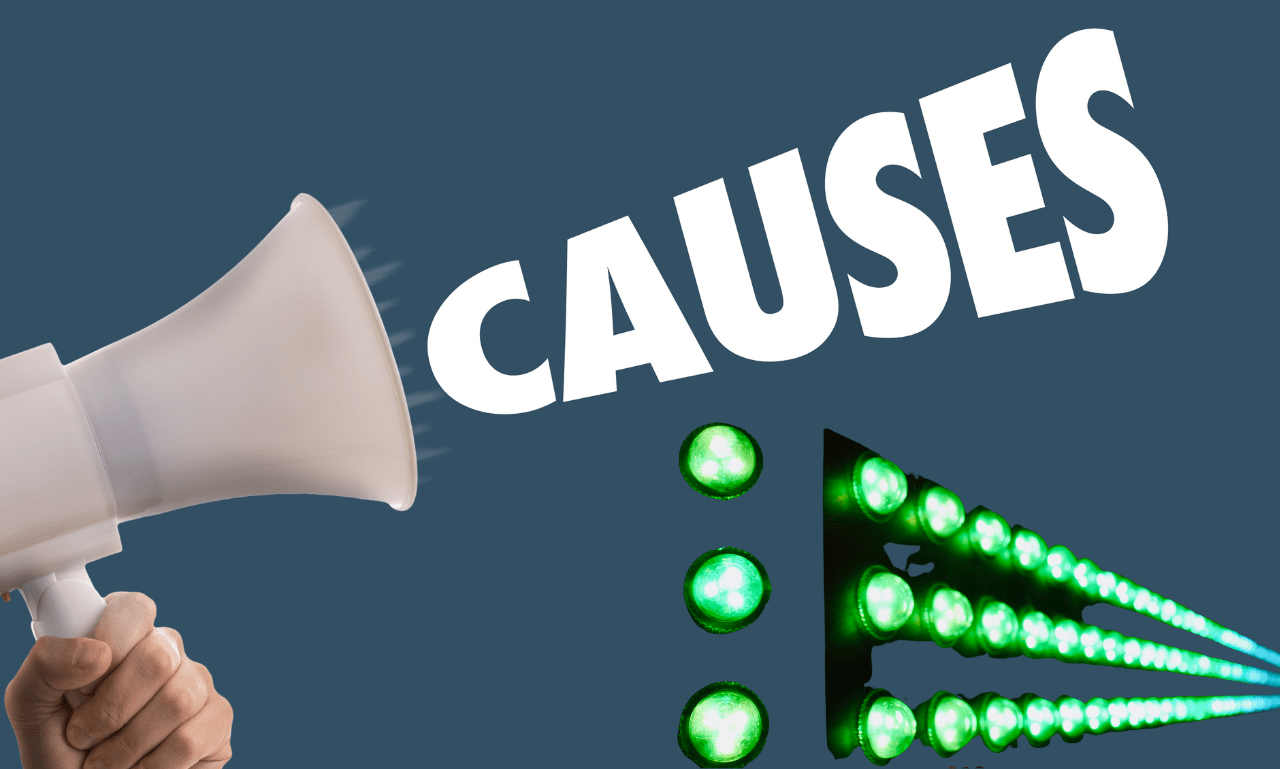
Common Causes of Green Blinking Lights
Low Battery or Power Supply Issues
One of the most frequent reasons for a green blinking light on your smoke detector is a low battery or power supply issue. When your smoke detector detects a drop in power, it uses the green blinking light as a signal to let you know something is amiss. This is an essential feature because it ensures that your smoke detector remains operational and can alert you to potential dangers. To address this issue and prevent interruptions in your detector’s functionality, follow these steps:
- Replace the Battery: If your smoke detector is battery-powered, start by replacing the battery. This is a simple and cost-effective solution that can often resolve the green blinking light issue. Make sure to use a high-quality battery and follow the manufacturer’s instructions for battery replacement.
- Check the Power Supply: If your smoke detector is hardwired into your home’s electrical system, check the power supply. Ensure that there hasn’t been a power outage or a tripped circuit breaker that might have caused the blinking green light. If there are power issues in your home, address them promptly.
- Perform a Reset: Some smoke detectors have a reset button or a reset procedure outlined in the user manual. Follow these instructions to reset the detector and see if the green blinking light stops. This can help if the issue is related to a temporary glitch.
- Consider a Professional Inspection: If the green blinking light persists despite your best efforts, it’s a good idea to have a professional technician inspect your smoke detector and its wiring. There may be an underlying electrical problem that needs attention.
Smoke Detector Self-Test and Malfunction Signals
Smoke detectors are designed to keep you safe by performing regular self-tests to ensure they are operating correctly. During these self-tests, if the detector identifies a malfunction or potential issue, it may trigger the green blinking light to alert you. It’s essential to understand the difference between routine self-tests and actual malfunctions to avoid unnecessary concern. Here’s how to differentiate between the two:
- Outine Self-Test: Most smoke detectors conduct routine self-tests periodically, often indicated by a brief green blinking light followed by a solid green or no light at all. This is a normal part of the detector’s operation and is nothing to worry about. It’s simply a sign that your detector is checking its sensors and circuitry to ensure they are functioning correctly.
- Malfunction Signals: If the green blinking light pattern is irregular, prolonged, or accompanied by audible beeping, it may indicate a malfunction or an issue with the detector’s sensors. In this case, consult your user manual or manufacturer’s guidelines for troubleshooting steps, or contact customer support for assistance.
- Battery Replacement: Sometimes, a malfunction signal can be resolved by replacing the battery, especially in battery-powered smoke detectors. If you haven’t replaced the battery recently, it’s a good idea to do so as a first step when dealing with a green blinking light.
Step 1: Gather the necessary tools and Supplies
Before you begin troubleshooting your smoke detector, ensure you have the following items ready:
- A fresh set of compatible batteries
- A small ladder or step stool (if your detector is mounted high)
- A screwdriver (if your detector has a battery compartment cover)
- A soft cloth or tissue for cleaning
Step 2: Safety First
Prioritize safety when dealing with smoke detectors. If you suspect a real fire emergency, don’t hesitate to evacuate your home and call the fire department immediately. Only proceed with troubleshooting if you are certain it’s a false alarm or a low-battery issue.
Step 3: Locate the Smoke Detector
Identify the smoke detector that is displaying the green blinking light. It’s usually mounted on the ceiling or high on a wall. Position yourself safely to access it.
Step 4: Remove the Detector
If your smoke detector has a removable cover, carefully detach it. This is typically done by turning the cover counterclockwise or using a screwdriver to remove any screws securing it. If it’s a sealed unit, proceed to the next step.
Step 5: Replace the Batteries
Remove the old batteries and dispose of them properly. It’s important to use high-quality batteries recommended by the manufacturer. Usually, smoke detectors require 9-volt alkaline batteries. Insert the new batteries following the polarity marked inside the detector.
Step 6: Reset the Detector
After replacing the batteries, you’ll need to reset the smoke detector to clear the green blinking light. This is typically done by pressing and holding the “Test” or “Reset” button on the detector for about 15-20 seconds. Refer to your detector’s user manual for specific instructions, as different models may have slightly varying procedures.
Step 7: Test the Detector
Once you’ve reset the detector, it’s crucial to ensure it’s functioning correctly. Trigger a test alarm using the “Test” button on the unit or by using smoke from a blown-out candle (do not use an open flame). The detector should sound a loud alarm if it’s working correctly.
Step 8: Reassemble and Mount the Detector
If your detector has a removable cover, carefully reattach it by turning it clockwise or securing any screws you removed earlier. Ensure it’s mounted securely on the ceiling or wall.
Step 9: Monitor the Detector
Keep an eye on the smoke detector for a while to confirm that the green blinking light has stopped. If the issue persists or returns shortly after replacing the batteries, there may be a more significant problem with the detector itself. In this case, it’s advisable to contact the manufacturer’s customer support or replace the detector if it’s old or damaged.
Troubleshooting a green blinking light on your smoke detector is a vital step in ensuring your home’s safety. By following this step-by-step guide, you can efficiently address low-battery issues and maintain the functionality of your smoke detectors. Regularly checking and maintaining your detectors is essential for your family’s safety, as they play a crucial role in alerting you to potential fire hazards.
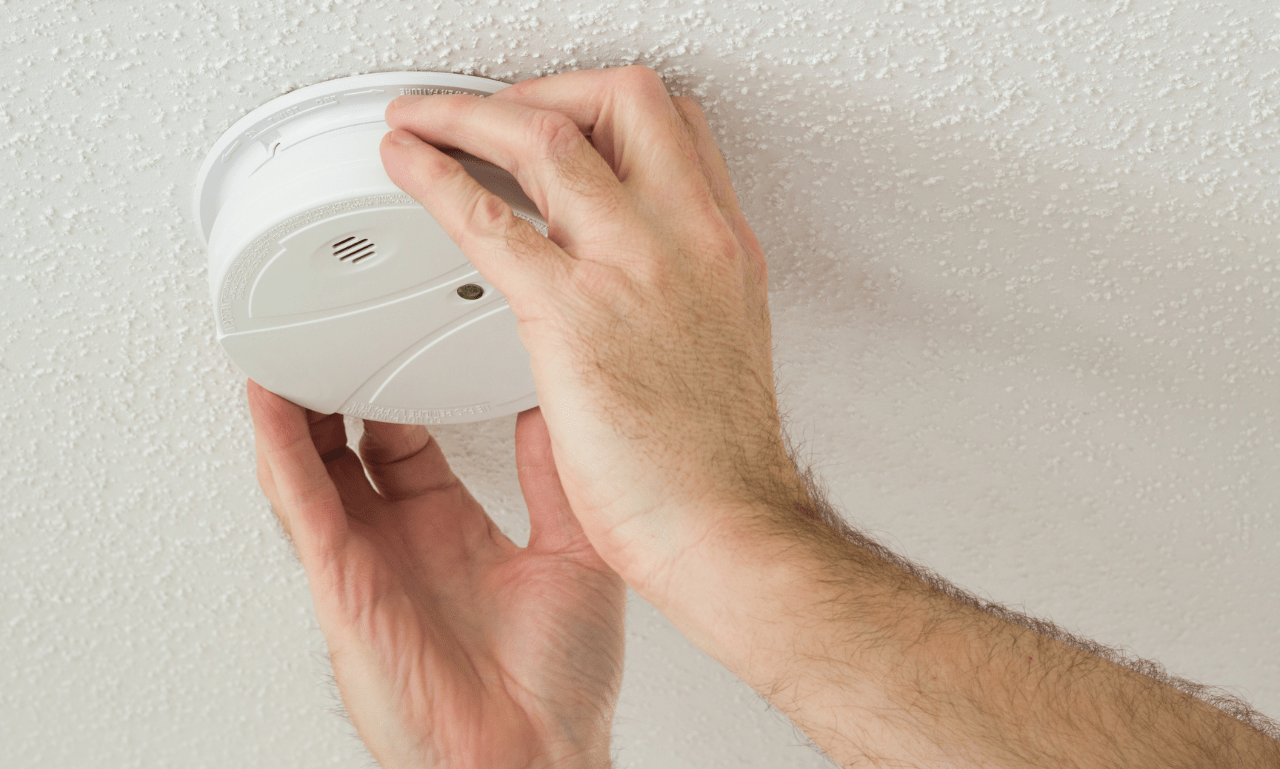
Interpreting Alarm Chirps and Notifications
Understanding Audible Alerts
In conjunction with the green blinking light, smoke detectors often emit audible alerts, such as chirps or beeps, to communicate specific conditions. We’ll explore what these audible alerts mean and how to respond appropriately when you hear them.
Deciphering the Chirps
The audible alerts emitted by smoke detectors are not just random noises; they are designed to convey critical information about the safety of your environment. Different patterns and frequencies of chirps indicate distinct situations:
- Single Chirp: A single chirp, usually heard at regular intervals, often signifies that your smoke detector is functioning correctly. It’s essentially a reassuring signal indicating that your detector is actively monitoring the environment for any signs of smoke or fire.
- Intermittent Chirps: If your smoke detector emits intermittent chirps, it might be trying to tell you something is amiss. This could be a low battery warning or a malfunction within the detector itself. In either case, prompt attention is necessary to ensure continued safety.
- Continuous Beeping: Continuous, non-stop beeping or a loud, continuous alarm is a clear indication of a potentially dangerous situation. This typically means the detector has detected smoke or a significant increase in heat. In such cases, you must take immediate action to evacuate and call emergency services.
Proactive Battery Replacement
One common reason for audible chirping is a low battery warning. To avoid this, it’s essential to replace the batteries in your smoke detector regularly. Most detectors will chirp at longer intervals when the battery is low, alerting you to the need for a replacement.
Malfunction Alerts
In some cases, smoke detectors may chirp to indicate a malfunction within the device itself. This could be due to dust or debris buildup, electrical issues, or other technical problems. If you hear unusual chirping patterns or suspect a malfunction, consult the user manual for troubleshooting steps or contact a professional for assistance.
Combining Visual and Audible Cues for Safety
Combining visual cues like the green blinking light with audible alerts enhances your understanding of the situation. We’ll emphasize the importance of paying attention to both indicators for a comprehensive assessment of your smoke detector’s status.
Immediate Response to Audible Alerts
When you hear an audible alert from your smoke detector, here are the immediate steps to take:
- Stay Calm: Audible alerts are designed to grab your attention. Stay calm and focused.
- Identify the Alert: Try to discern the type of chirp or beep. Is it a single chirp, intermittent chirps, or continuous beeping?
- Check for Smoke or Fire: If it’s continuous beeping, check for signs of smoke or fire. If you see or smell smoke, evacuate immediately and call 911.
- Replace Batteries: If it’s an intermittent chirp, consider replacing the batteries in your smoke detector. Make sure to follow the manufacturer’s recommendations for battery replacement.
- Consult the Manual: If you’re unsure about the meaning of the alert or how to resolve it, consult your smoke detector’s user manual for guidance.
- Seek Professional Help: If the issue persists or if you suspect a malfunction, contact a professional technician to inspect and repair your smoke detector.
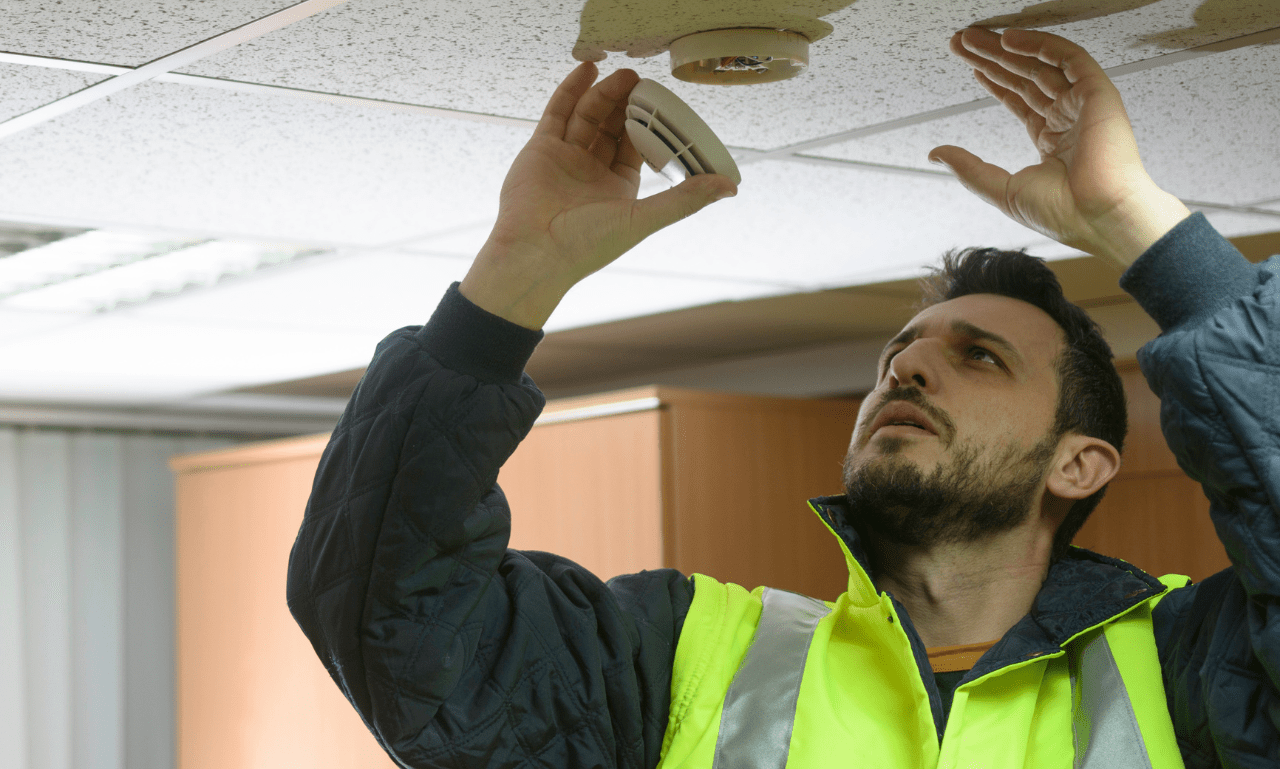
Regular Maintenance and Testing
Ensuring Smoke Detector Reliability
Welcome to Chapter 5 of our comprehensive guide to smoke detectors. In this installment, we will delve into the crucial aspects of regular maintenance and testing to ensure the reliability of your smoke detector. Neglecting these tasks can lead to false alarms, reduced effectiveness, or even complete device failure. By following the tips and guidelines provided here, you can keep your smoke detector in top working condition, offering you and your loved ones the highest level of safety.
Timely Battery Replacements
One of the most critical aspects of smoke detector maintenance is ensuring that the batteries are in good condition. A smoke detector’s primary power source is usually a 9-volt battery or a long-lasting lithium battery. Here are some key tips regarding timely battery replacements:
- Scheduled Battery Replacements: It’s essential to replace the batteries in your smoke detector on a regular schedule. Most experts recommend doing this at least once a year. However, it’s a good practice to mark your calendar or set a reminder for every six months to be extra cautious.
- Low Battery Warning: Modern smoke detectors are equipped with low battery warnings. When you hear that familiar chirping sound at regular intervals, it’s a clear indication that it’s time to change the batteries. Never ignore this warning, as it’s a sign that your smoke detector may not function properly when needed.
- Use High-Quality Batteries: Invest in high-quality batteries from reputable brands. While they may cost a bit more, they are more reliable and tend to last longer. Cheap or expired batteries can lead to malfunctioning detectors and compromise your safety.
Effective Cleaning Strategies
Smoke detectors can accumulate dust, dirt, and other particles over time, which can impede their performance. Cleaning your smoke detector is a straightforward task but is often overlooked. Here’s how to effectively clean your device:
- Power Off the Detector: Before you start cleaning, turn off the power to the smoke detector. You can do this by either removing the battery or disconnecting it from your home’s electrical system, depending on the type of detector you have.
- Use a Soft Brush or Vacuum: Gently clean the outside of the detector with a soft brush or use a vacuum cleaner with a brush attachment to remove dust and debris. Pay special attention to the vents, as this is where air flows in for smoke detection.
- Avoid Harsh Chemicals: Do not use harsh chemicals or cleaning agents, as they can damage the sensitive sensors inside the device. Stick to dry or slightly damp cloths for cleaning.
- Test After Cleaning: Once you’ve cleaned the detector, test it to ensure it’s working correctly. Most detectors have a test button that, when pressed, triggers an alarm to confirm functionality. Make sure to replace the battery if needed.
Checking for Obstructions
Obstructions near or inside your smoke detector can also affect its performance. Here are some tips for ensuring that there are no impediments:
- Clear the Area: Ensure that there are no objects or furniture blocking the detector’s view or airflow. Smoke detectors should have a clear line of sight to the entire room.
- Avoid Painting or Decorating Directly Around It: If you need to paint or decorate your ceiling or walls, be cautious not to obstruct or apply paint directly onto the smoke detector. This can interfere with its sensors.
- Check for Insects and Dust: Periodically inspect the inside of the detector for any insects or excessive dust accumulation. These can hinder the device’s operation.
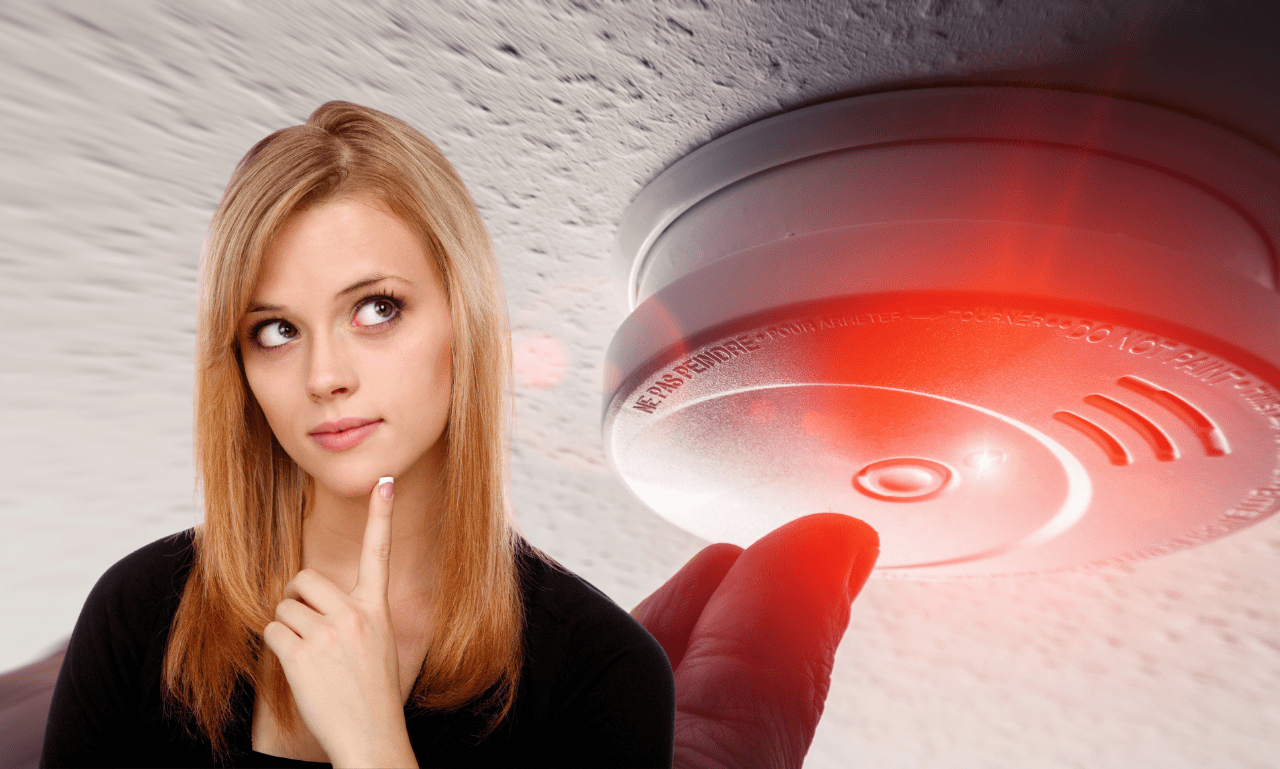
When to Seek Professional Help
Recognizing When DIY Solutions Aren’t Enough
Smoke detectors play a pivotal role in safeguarding your home and loved ones from the potentially devastating consequences of fires. Regular maintenance and troubleshooting can resolve many common smoke detector issues, but there are instances when only a professional can ensure your safety. In this chapter, we’ll help you discern when it’s time to seek the expertise of a qualified technician or electrician.
The Importance of Professional Smoke Detector Inspections
- Complex Wiring Issues: Smoke detectors are often interconnected, meaning they communicate with each other. If you encounter problems with the wiring or interconnection, it’s best to leave it to the professionals. Faulty wiring can lead to false alarms or, worse, failed alarms during a real emergency.
- Hardwired Smoke Detectors: If your smoke detectors are hardwired into your electrical system, any electrical issues could pose a serious risk. A licensed electrician should handle these types of problems to ensure both your safety and compliance with local electrical codes.
- False Alarms Persist: While occasional false alarms can occur due to cooking smoke or steam, persistent false alarms are a cause for concern. It may indicate a more significant underlying issue that requires expert assessment. Professionals can diagnose the problem and recommend the necessary repairs or replacements.
- Inaccessible or High Locations: Smoke detectors installed in high or hard-to-reach areas, such as vaulted ceilings or stairwells, may pose a challenge for DIY enthusiasts. A professional technician will have the equipment and expertise to safely access and maintain these detectors.
- Old or Outdated Detectors: If your smoke detectors are outdated or no longer meet current safety standards, it’s essential to replace them promptly. A professional can advise you on the most suitable models for your home and ensure proper installation.
- Periodic Inspections: Regular inspections by certified technicians are crucial for maintaining the reliability of your smoke detectors. Professionals are trained to identify subtle issues that may go unnoticed by the untrained eye. These inspections are typically recommended every one to two years, depending on local regulations and manufacturer guidelines.
How Professional Inspections Contribute to Home Safety
Professional inspections offer several benefits beyond resolving immediate issues:
- Peace of Mind: Knowing that your smoke detectors are in optimal condition provides peace of mind for you and your family. You can rest assured that your home is well-prepared to respond to fire emergencies.
- Legal Compliance: Regular inspections and maintenance are often required by local building codes and insurance companies. Compliance ensures you won’t face legal issues or insurance complications in the event of a fire.
- Extended Lifespan: Professional maintenance can extend the lifespan of your smoke detectors, saving you money on replacements in the long run.
- Enhanced Sensitivity: Technicians can calibrate and test your smoke detectors to ensure they are as sensitive as possible. This ensures early detection of even small amounts of smoke, providing more time for evacuation during a fire.
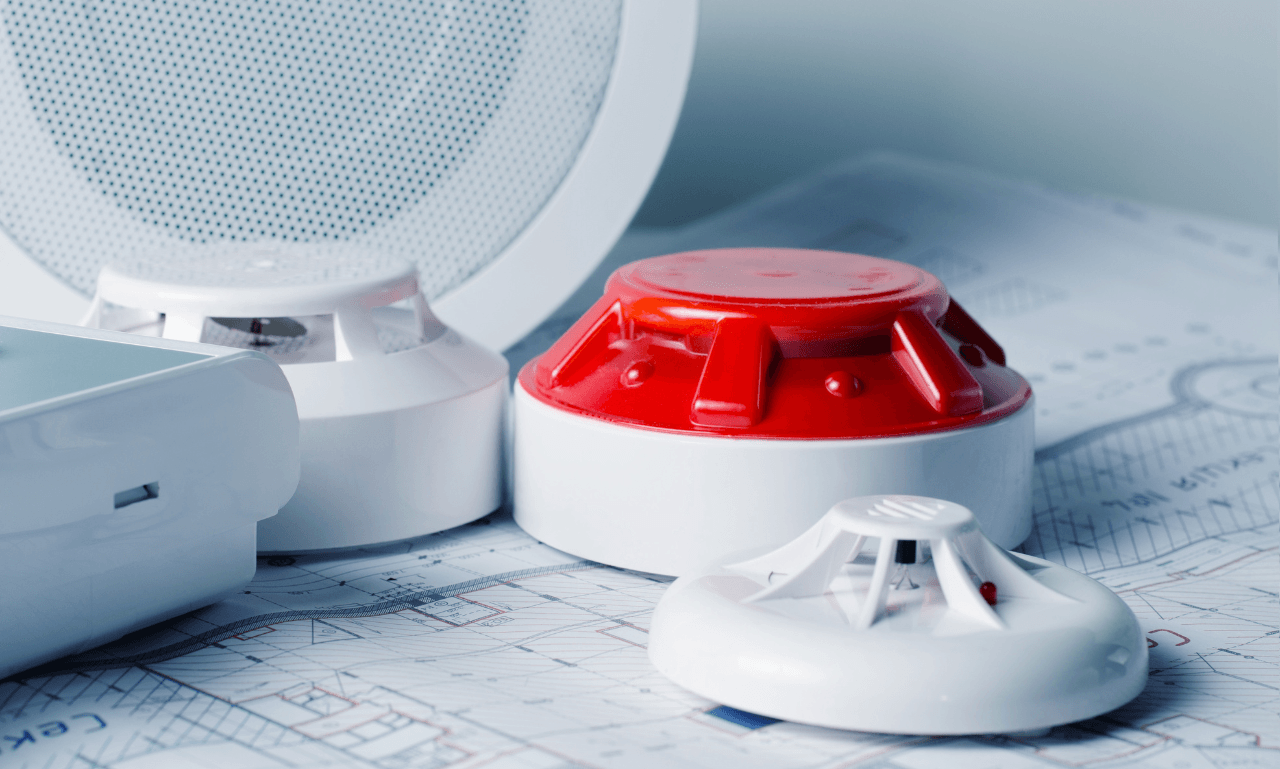
Smoke Detector Technology Advancements
Smart Smoke Detectors and Connectivity
Advancements in smoke detector technology have brought about a revolution in home safety. Gone are the days of simple, standalone smoke alarms that merely blare a siren when smoke is detected. Today, we have smart smoke detectors that offer a plethora of advanced features, including connectivity to your smartphone and the ability to send alerts remotely. In this chapter, we’ll explore these modern options and delve into their advantages, highlighting how they can significantly enhance the safety of your home.
Enhancing Home Safety with Modern Features
- Voice Alerts: One of the most notable advancements in smart smoke detectors is their ability to provide voice alerts. These detectors can communicate with you in plain language, letting you know the nature and location of the potential threat. For example, they might say, “Smoke detected in the kitchen,” which can be particularly helpful in larger homes or for those with hearing impairments.
- Interconnected Systems: Interconnected smoke detectors are a game-changer for home safety. When one detector detects smoke or fire, it can trigger all the interconnected detectors in your home to sound an alarm simultaneously. This means that even if a fire starts in an unoccupied room, everyone in the house will be alerted, providing precious extra seconds to react and evacuate.
- Integration with Home Security Systems: Modern smart smoke detectors are often designed to work in harmony with your home security system. This integration can be invaluable in an emergency. If your smoke detector detects a fire, it can automatically trigger your security system to alert the monitoring center and dispatch help if needed. This level of automation can be a lifesaver when every second counts.
- Remote Alerts and Control: Perhaps one of the most convenient features of smart smoke detectors is their ability to connect to your smartphone or other mobile devices. When smoke or fire is detected, you’ll receive instant notifications on your phone, regardless of where you are. This means you can be alerted to a potential emergency even if you’re at work or on vacation. Some smart detectors also allow you to silence false alarms remotely, reducing the annoyance of dealing with a blaring alarm.
- Detailed Notifications: Unlike traditional alarms that simply beep, smart smoke detectors can provide detailed notifications. They can alert you not only to the presence of smoke or fire but also to the levels of dangerous gases or the rate at which a fire is spreading. This information can help you make more informed decisions in an emergency.
- Battery Monitoring: Many smart smoke detectors offer battery monitoring through their smartphone apps. You’ll receive alerts when the batteries are running low, ensuring that your detectors are always functioning at their best.

Importance of Smoke Detector Compliance
Legal Requirements and Safety Standards
Smoke detectors are a crucial component of home safety, serving as the first line of defense against fires. Their importance cannot be overstated, and this extends beyond just safeguarding your property and loved ones. In many jurisdictions, adhering to smoke detector compliance is not just a matter of personal choice; it’s a legal requirement. In this chapter, we will explore the legal obligations and safety standards that dictate the installation and maintenance of smoke detectors in residential properties.
Why Compliance Matters
Before delving into the legal requirements, it’s important to understand why compliance with smoke detector regulations is paramount. Smoke detectors are the most effective early warning system in the event of a fire. They can provide those critical extra minutes needed to escape a potentially life-threatening situation. Compliance isn’t merely about following rules; it’s about safeguarding lives.
Legal Requirements
Smoke detector requirements can vary depending on where you live, but there are some commonalities in the regulations that most areas adhere to:
- Placement: Regulations typically dictate where smoke detectors should be placed within a home. This includes specific guidelines for areas like bedrooms, hallways, and common areas. Proper placement ensures that detectors can detect smoke quickly and effectively.
- Number of Detectors: The number of smoke detectors required in a residence is often determined by the size and layout of the property. Larger homes may need more detectors to ensure comprehensive coverage. Regulations aim to ensure that there are enough detectors to provide early warning in all critical areas.
- Power Sources: Regulations may specify the power source for smoke detectors. Battery-operated and hardwired detectors are common options, with some areas mandating a combination of both for redundancy.
- Interconnectivity: In many places, regulations require smoke detectors to be interconnected so that if one detects smoke, all alarms in the house sound simultaneously. This ensures that everyone in the home is alerted quickly.
- Testing and Maintenance: Compliance doesn’t end with installation. Regular testing and maintenance are typically mandated by law. This includes testing detectors monthly, replacing batteries as needed, and cleaning them to prevent false alarms.
- Up-to-Date Technology: Regulations may also require that your smoke detectors use the latest technology to ensure their effectiveness. This could include features like photoelectric sensors or carbon monoxide detection.
Ensuring Compliance
Ensuring that your home meets these regulatory guidelines is not just about adhering to the law; it’s about prioritizing the safety of your household. Here’s how you can ensure compliance:
- Research Local Regulations: Start by researching the specific smoke detector regulations in your area. These can often be found on your local government website or by contacting your local fire department.
- Consult Professionals: When in doubt, consult a professional. Fire safety experts or electricians can help you understand the specific requirements for your home and ensure proper installation.
- Regular Inspections: Regularly inspect your smoke detectors to ensure they are in working order. This includes testing them monthly, replacing batteries as needed, and cleaning them to prevent dust and debris from affecting their performance.
- Upgrade as Needed: If your smoke detectors are outdated or no longer comply with current regulations, consider upgrading to newer, more advanced models. Investing in modern technology can provide an extra layer of safety.
Conclusion
The Green Blinking Light: A Vital Smoke Detector Indicator
In conclusion, the green blinking light on your smoke detector serves as a crucial indicator of its status. Understanding what it means and how to respond to it ensures that your smoke detector functions optimally, providing the protection you and your family need.
A Safer Home and Peace of Mind with Proper Understanding
By mastering the interpretation of the green blinking light, maintaining your smoke detector, and staying informed about advancements in smoke detector technology, you can create a safer home environment and enjoy peace of mind knowing you’re well-prepared for potential fire hazards.

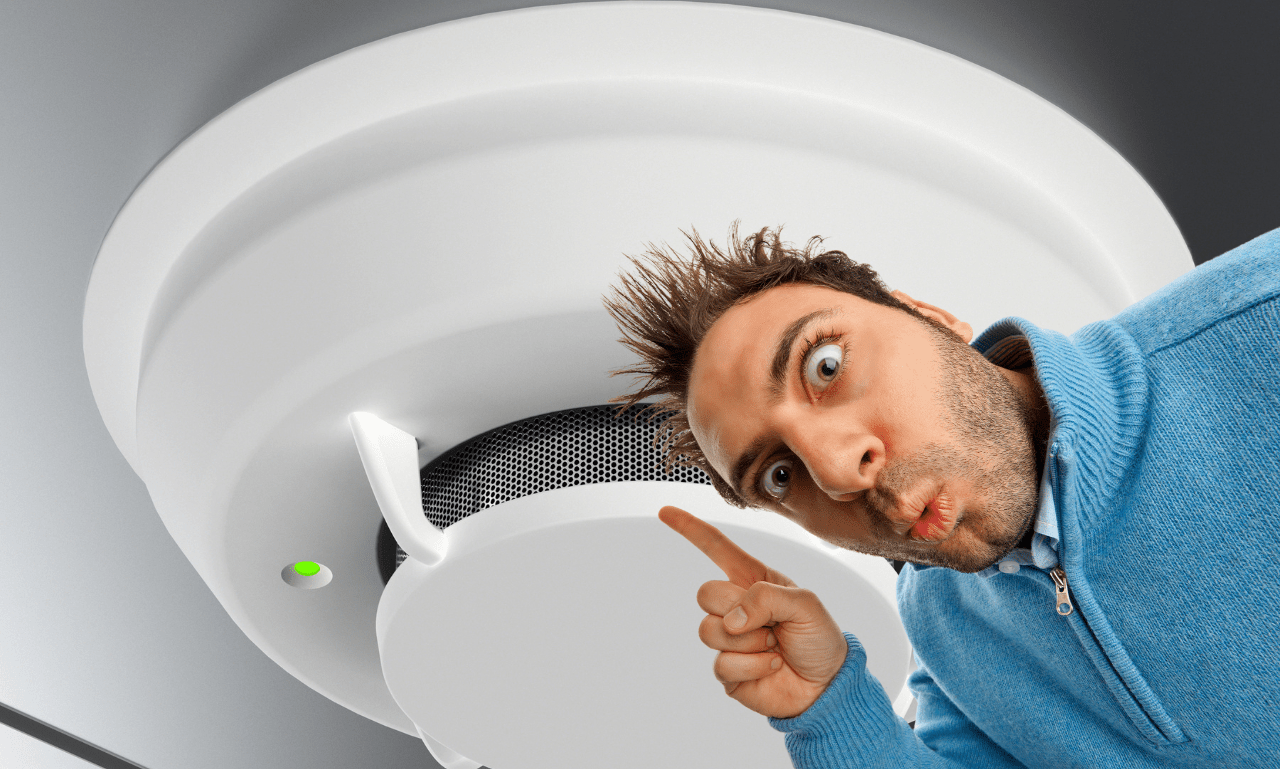





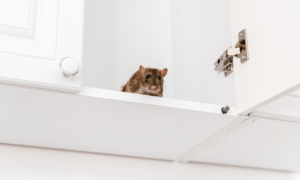




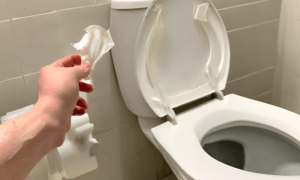



One Response
I’m really inspired with your writing skills and also with the layout to your blog. Is that this a paid topic or did you customize it your self? Either way keep up the nice high quality writing, it’s uncommon to look a nice weblog like this one these days!